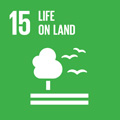- Docente: Alberto Danielli
- Credits: 6
- SSD: BIO/11
- Language: English
- Moduli: Alberto Danielli (Modulo 1) Andrea Vannini (Modulo 2)
- Teaching Mode: Traditional lectures (Modulo 1) Traditional lectures (Modulo 2)
- Campus: Bologna
- Corso: First cycle degree programme (L) in Genomics (cod. 9211)
-
from Mar 04, 2025 to Jun 13, 2025
-
from Jun 11, 2025 to Jun 12, 2025
Learning outcomes
The successful student is provided with an in-depth understanding of the molecular organization of cells and knows the basic mechanisms of gene regulation, protein synthesis, DNA replication, repair and recombination.
Course contents
INTRODUCTION: CELLS AND GENOMES
The Universal features of cells. Cellular building blocks. The genome as working blueprint for life. Central Dogma of molecular biology. Protein folding, domains, modifications, interactions. Plasma membrane. The lipid bilayer. Range of cell sizes and shapes.
STRUCTURE AND FUNCTION OF NUCLEIC ACIDS
DNA double helix. DNA topological variations, supercoiling. The bacterial nucleoid. Chromosomal DNA and its packaging in Chromatin Fiber. Structure and versatility of RNA
CELL REPLICATION
The eukaryotic cell cycle. Cyclins and cdks. DNA replication. Chromosome segregation. The mitotic spindle.
TRANSCRIPTION
From DNA to RNA. Polymerases, Promoters, Termination. Transcriptional regulation
RNA PROCESSING
Capping. Polyadenylation. rRNA maturation, RNA Editing, RNA modifications
TRANSLATION
From RNA to protein: the genetic code. Ribosomes. tRNAs, AA-tRNA synthases the second genetic code. Translation initiation, elongation and termination, stop signals & release factors, Protein chaperones. Proteasome
RIBOREGULATION
Regulation by non-coding RNAs.Bacterial sRNAs, riboswitches.
Student Workshops
- Cellular responses to DNA damage
- dsDNA break repair & homologous recombination
- Intracellular membrane transport
- Principles of cell signaling
- The cytoskeleton
- Apoptosis
- Cell junctions and the ECM
Hands-on lab
In vivo study of the post-transcriptional regulation mediated by the RyhB sRNA in Escherichia coli
- Site directed mutagenesis
- Preparative gel electrophoresis
- DNA purification
- Ligation
- Molecular cloning
- GFP reporter gene fusions
- fluorimetry and flow cytometry
SEQUENCE ANALYSIS EXERCIZES
Readings/Bibliography
Craig et al.
Molecular Biology - Principles of Genome Function - second edition
OXFORD Press
Alberts et al.
Molecular Biology of the Cell - sixth edition
Garland Science
Milo & Phillips
Cell Biology by the Numbers
freely available from http://book.bionumbers.org/
Additional teaching material will be made available through the Virtuale UniBO repository. https://virtuale.unibo.it
Teaching methods
Frontal instruction with summarizing powerpoint presentations
Estimates and exercises to train biological numeracy
Problem posing and solving sessions, active classroom approaches
Student workshops
Hands-on activity (wet-lab)
Sequence analysis exercises
IMPORTANT: As concerns the teaching methods of this course unit, all students (including all the international incoming exchange students, i.e. ERASMUS) must attend Module 1, 2 online [https://www.unibo.it/it/servizi-e-opportunita/salute-e-assistenza/salute-e-sicurezza/sicurezza-e-salute-nei-luoghi-di-studio-e-tirocinio ], while Module 3 on health and safety is to be attended in class. Information about Module 3 attendance schedule is available on the website of your degree programme ("studiare"--"formazione obbligatoria su sicurezza e salute").
Assessment methods
Written examination, including 5 sections:
- Basic questions quiz
- In depth questions quiz
- Open questions
- Strip sequence
- Analytical questions
Workshop evaluation
Lab report
SERVICE FOR STUDENTS WITH DISABILITIES AND SLD
Teaching tools
Blackboard/whiteboard
.pdf/.ppt slide presentations
Movies
Group collaborative learning
Bioinformatics lab (DNA editing software)
Molecular wet-lab activities
Office hours
See the website of Alberto Danielli
See the website of Andrea Vannini
SDGs



This teaching activity contributes to the achievement of the Sustainable Development Goals of the UN 2030 Agenda.
